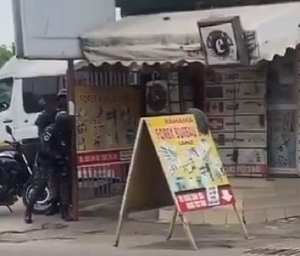Efforts are underway to tie the West African Gas Pipeline and that of Ghana Gas to enable a reverse flow of gas from Aboadze to Tema when the commodity becomes abundant.
This means that Ghana’s own gas would pass through the West African Gas pipeline to power the increasing number of thermal plants in the Tema power enclave.
“What we are trying to do is to put in a mechanism for reverse-flow so that when gas from Ghana Gas is ramped up beyond the capacity of Aboadze then it will flow to Tema for use by the plants there,” Prof. Thomas Akabza, Chief Director of the Ministry of Energy and Petroleum, told the B&FT.
“The VRA and WAPCo are jointly performing a number of activities including a survey. Once the survey is finished we will start implementing the mechanical work,” he said.
The West African Gas Pipeline from Nigeria runs through the coastline of Tema, where it delivers gas to the Sunon Asongli thermal plant to power plants at Aboadze in the Western Region.
Located in Tema are power plants belonging to the Volta River Authority (VRA) as well as the privately-owned Sunon Asogli thermal plant (200MW) and the Cenit thermal plant (126MW).
On November 27, 2014, Energy and Petroleum Minister Emmanuel Armah Kofi-Buah told an emergency meeting in Accra of the Committee of Ministers of the West African Gas Pipeline Project that addressing the issue of reverse-flow of gas was an “immediate need”.
“We know that the VRA is almost completing a 220megawatt power plant that will also take additional gas,” he said.
A communique issued after the meeting of the committee of energy ministers from Nigeria, Benin, Togo and Ghana directed the West African Gas Pipeline Authority (WAGPA) and the West African Gas Pipeline Company (WAPCo) to propose a tariff system that will attract gas from Ghana to enter the pipeline system at Takoradi “and possibly other points”.
Even as the country struggles to procure gas in the needed quantities (around 350million mmscf) for power generation, due to erratic supply from Nigeria and the undue delay of the jubilee gas project, the prospects have been described as great.
The recently-signed Sankofa deal is expected to produce at maximum 170 million standard cubic feet of gas per day in addition to the 120 million from the Jubilee Fields and 50 million cubic feet from the Tweneboah Enyeara and Ntomme (TEN) project.
Business News of Monday, 8 December 2014
Source: B&FT

















